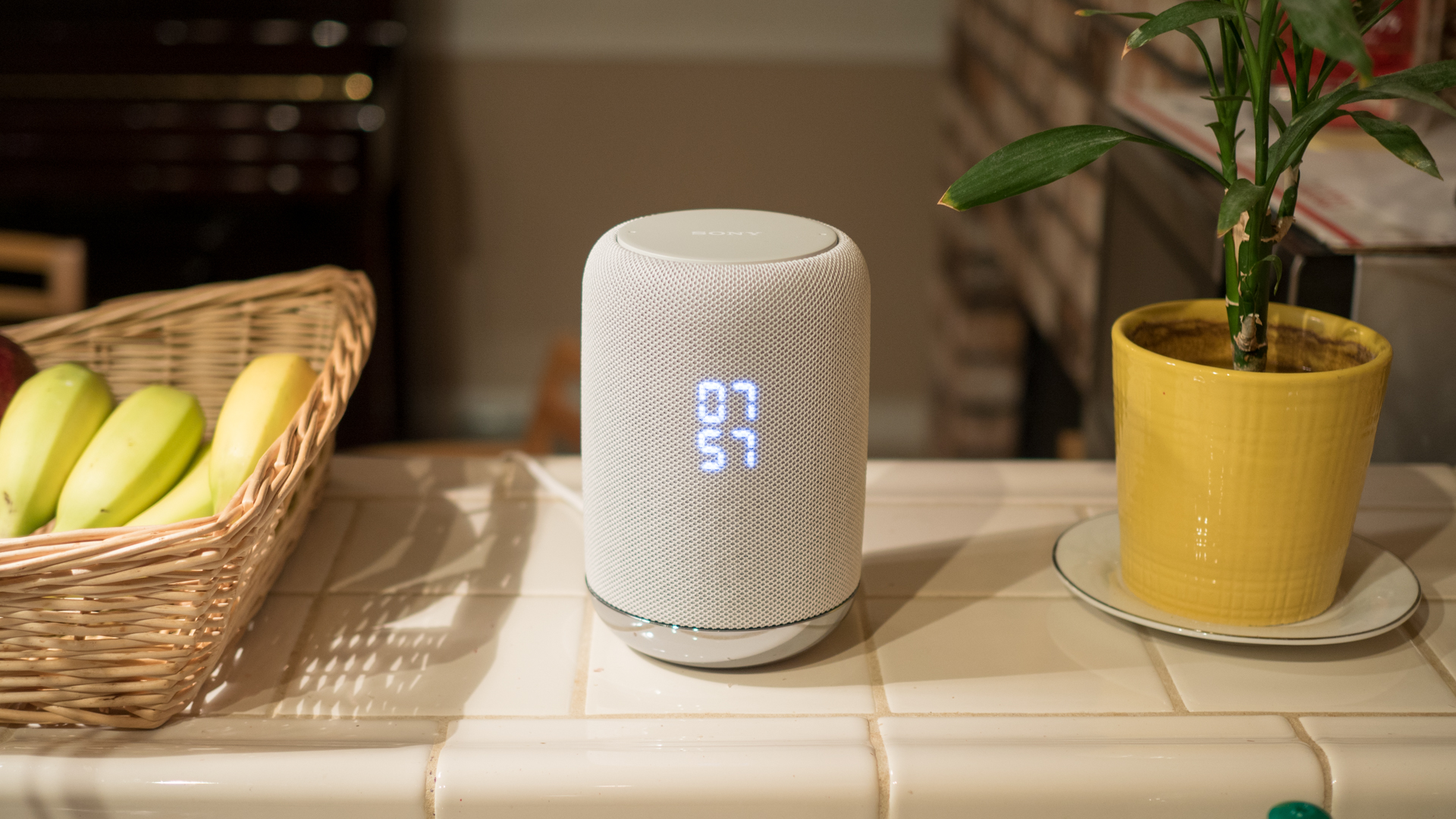TechRadar Verdict
In isolation, the Sony LF-S50G is a very good smart speaker. It’s great at picking up voice commands, sounds good and features a handy LED clock. However, compared to the competition, the Sony is a poor value as other speakers in its price range outshine it. Your money should be spent elsewhere.
Pros
- +
Gets loud
- +
Excellent voice recognition
- +
Splash-proof
Cons
- -
Can’t make calls (yet)
- -
Average sound quality
- -
Rubbish gesture controls
Why you can trust TechRadar
Google wowed us when it launched its first voice assistant speaker, the Google Home. This affordably priced speaker was the first to have Google Assistant baked in and, in year since its launch, has become more intelligent than ever.
Sony, seeing an opportunity with the bold new world of smart speakers, has come up with a spin of its own: the LF-S50G Wireless Smart Speaker with Google Assistant Built-In. (Yes, that's really its name.) Its design and feature set are remarkably similar to the Apple HomePod in the sense that it's round and audio performance is the speaker's first and foremost priority.
Importantly, and intelligently, instead of creating its own smart assistant from scratch like Samsung is doing with Bixby, Sony partnered with Google for the LF-S50G to create something new and slightly different than Google Home.
What separates the Sony LF-S50G from other Google Assistant speakers on the market is its gesture controls and handy LED clock that shines through its fabric covering. Unfortunately, though, that’s about it when it comes to differentiating itself from the competition.
In isolation, the Sony LF-S50G is a good speaker. It features good-but-not-exceptional sound quality, accurate mics, and is splash proof. But a lot has changed in the year since Google Home was released, and when judged against the competition the Sony LF-S50G just doesn't offer the same value - or even the same skills and features - that its competition does. Here’s why.
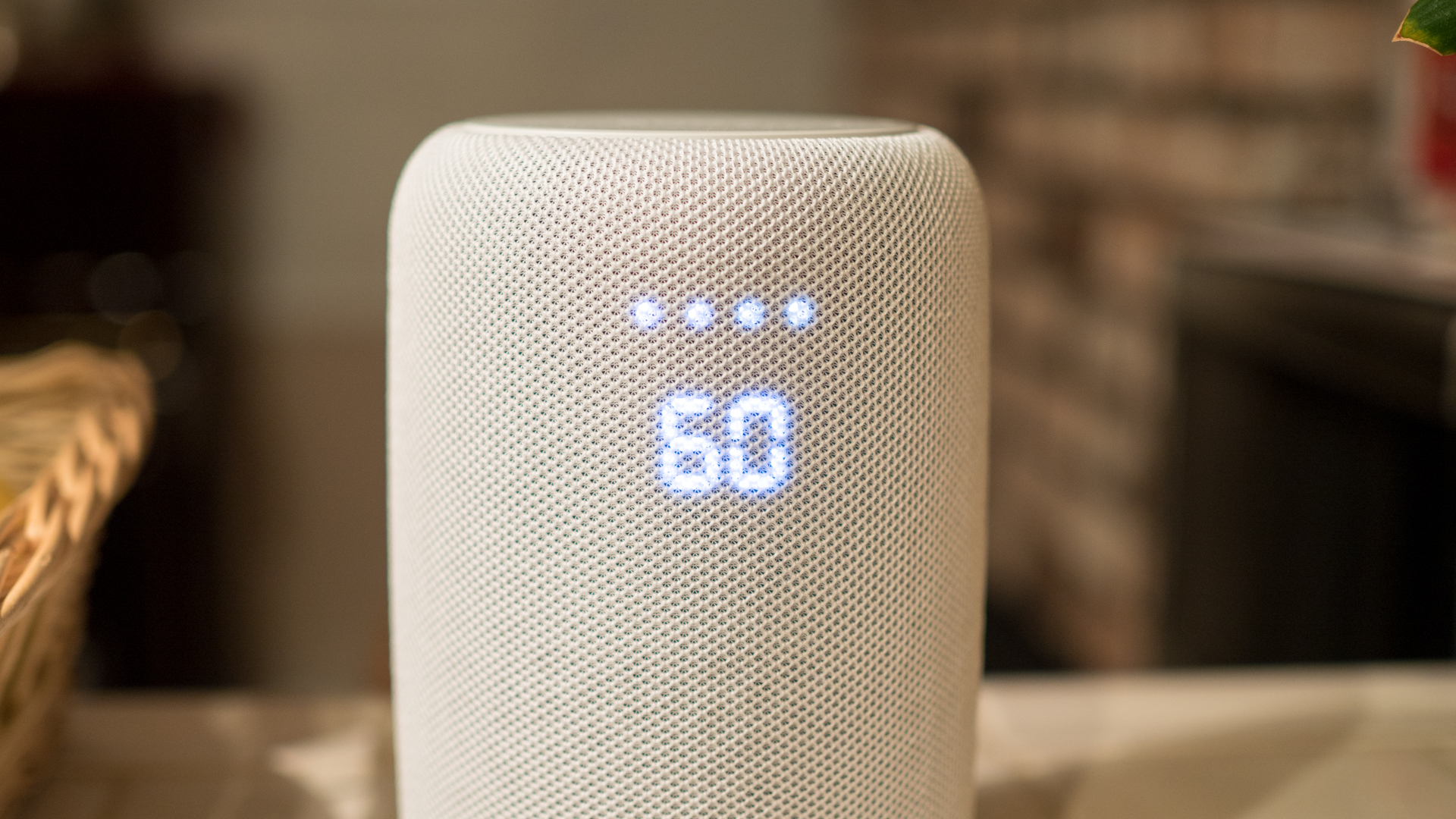
Design and features
If the Sony LF-S50G looks familiar to you, that’s because it’s a dead ringer for the Apple HomePod or even the UE Wonderboom - i.e. it's a cylindrical shell with mesh fabric surrounding its exterior. While its looks may not be original, it is a handsome speaker.
Externally, the speaker is wrapped in a gray fabric that can be swapped when worn out for another color. Right now, there are only two color options: black or white (it’s really a light gray). The base of the speaker features a chrome ring that also houses buttons for muting the mics on the speaker as well as Bluetooth pairing button. The speaker also includes NFC for easy pairing with Android devices.
Underneath the speaker are two hidden buttons; one is for cycling through brightness settings of the LED clock on the front of the speaker and the other for disabling the gesture controls for three minutes. It’s bizarre that Sony chose to put the dimmer switch on the bottom of the speaker instead of the top or side as it’s a feature that is constantly used, especially if you want to dim the clock in the bedroom. It's also ironic that there’s also no way to ask Google Assistant to help dim the clock brightness - it can dim everything else but itself.
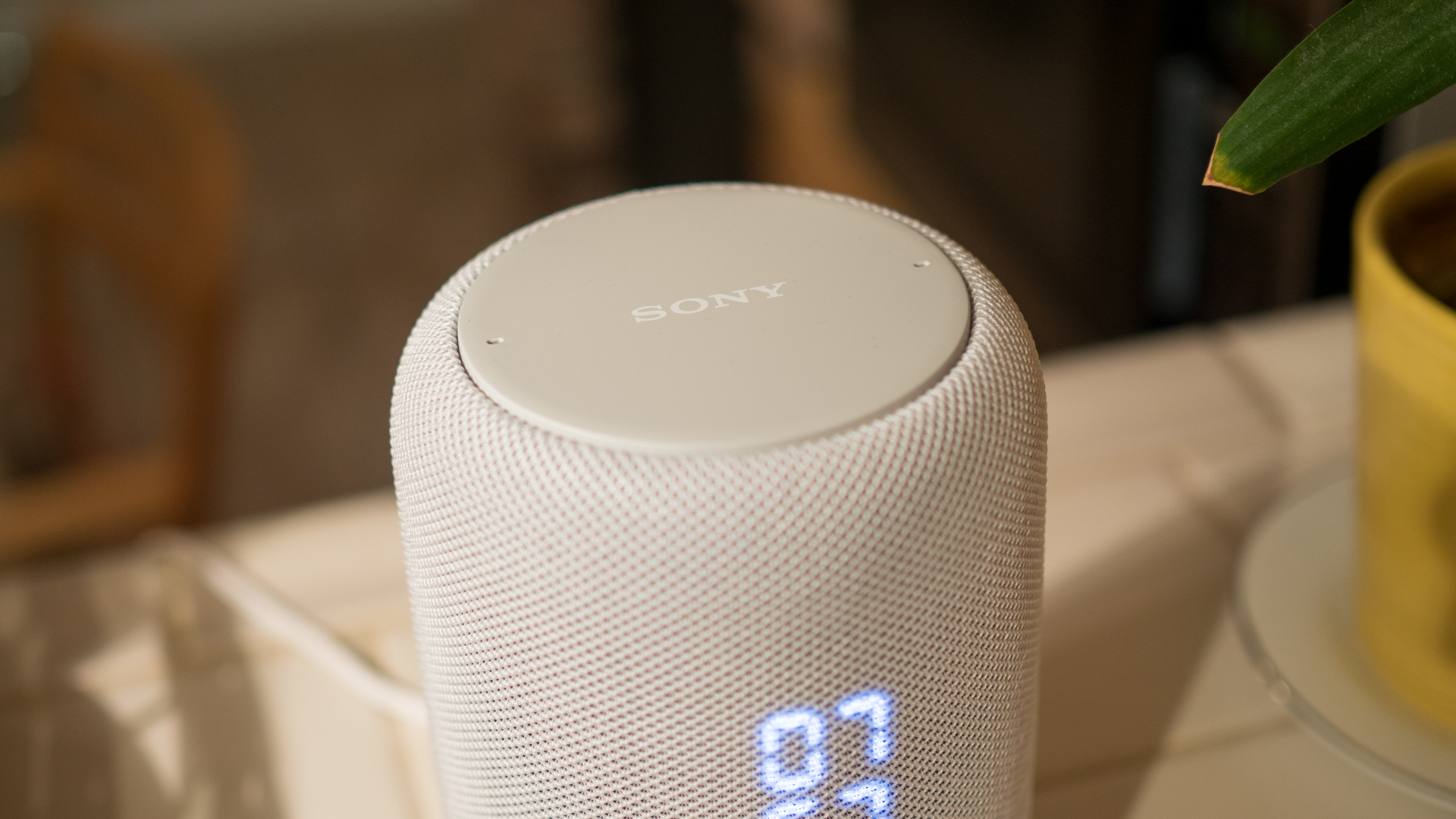
As for the gesture controls, you’re supposed to be able to control playback, volume and activation of Google Assistant with just a few flicks of your hands.
Unfortunately, the gesture controls were extremely temperamental, refusing to work half the time during our testing. For instance, you’re supposed to make a circle motion to change volume but the gesture rarely worked. We resorted to simply asking Google Assistant to set the volume level for us. Physical buttons or even the touchpad of the Google Home would have been better alternatives.
Performance
Triggering Google Assistant works by simply saying “OK Google” or “Hey Google” to get Google Assistant to start listening for commands. The Sony LF-S50G was excellent at recognizing our voice, even across the room. The only time it struggled to hear was when music was playing loudly.
Speaking of, Google Assistant has gotten smarter over the years and is now at the point where its app integrations and natural language processing is good enough that just about anyone can learn to use it in just a few minutes.
When Google Assistant works, it’s a magical experience. But when it fails, it’s easy to get frustrated since the experience has been seamless up until that point. The Sony LF-S50G began breaking this magic when we tried to make a call and Google Assistant told us that calling isn’t available yet.
We were perplexed as to why such a basic feature wouldn’t be included with the Sony LF-S50G. We reached out to the company and here’s what they had to say:
“[Calling] is a feature that is determined by the Google Assistant and not Sony. Google has spoken about their intention to support such a feature in the future but have not announced a date.”
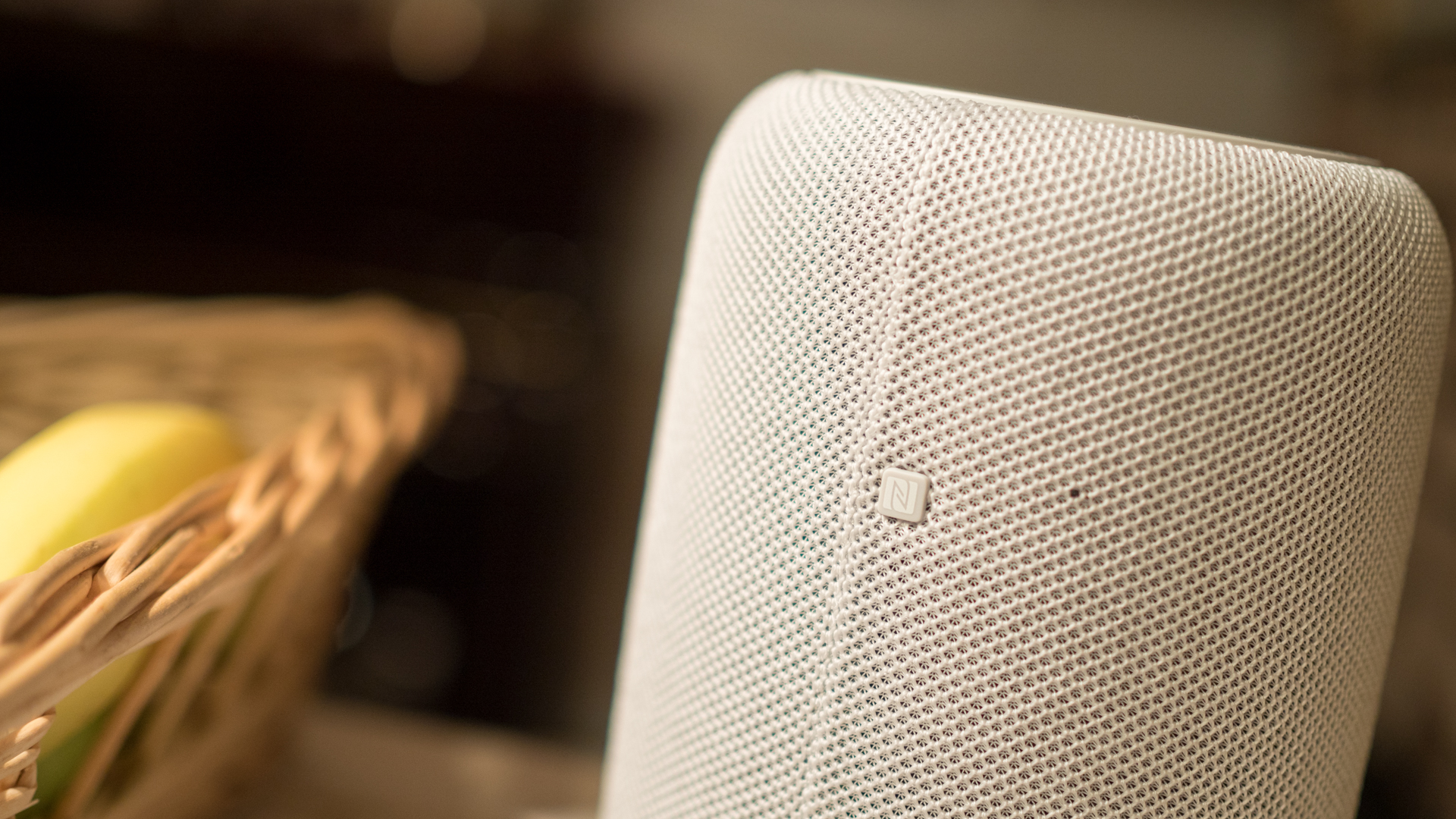
For whatever reason, Google is preventing Sony from having the ability to call, which is something Google’s own speaker, Google Home, can already do. It’s nice to know that Google eventually wants to bring calling to the LF-S50G, but it’s perplexing why the feature was left out in the first place.
In terms of audio quality, the Sony LF-S50G is merely average. While the speaker gets surprisingly loud, it doesn’t sound very good. Highs exhibit some sibilance and bass needs more impact. Soundstage is very narrow and the speaker sounds like its under amped at higher volumes.
Compared to the competition, it’s tough to recommend the Sony LF-S50G on the merits of sound quality alone. It sounds slightly better than the Google Home, sure, but it doesn’t sound as good as the Sonos One, which is the exact same price as the Sony and trades Google Assistant out for Amazon's Alexa.
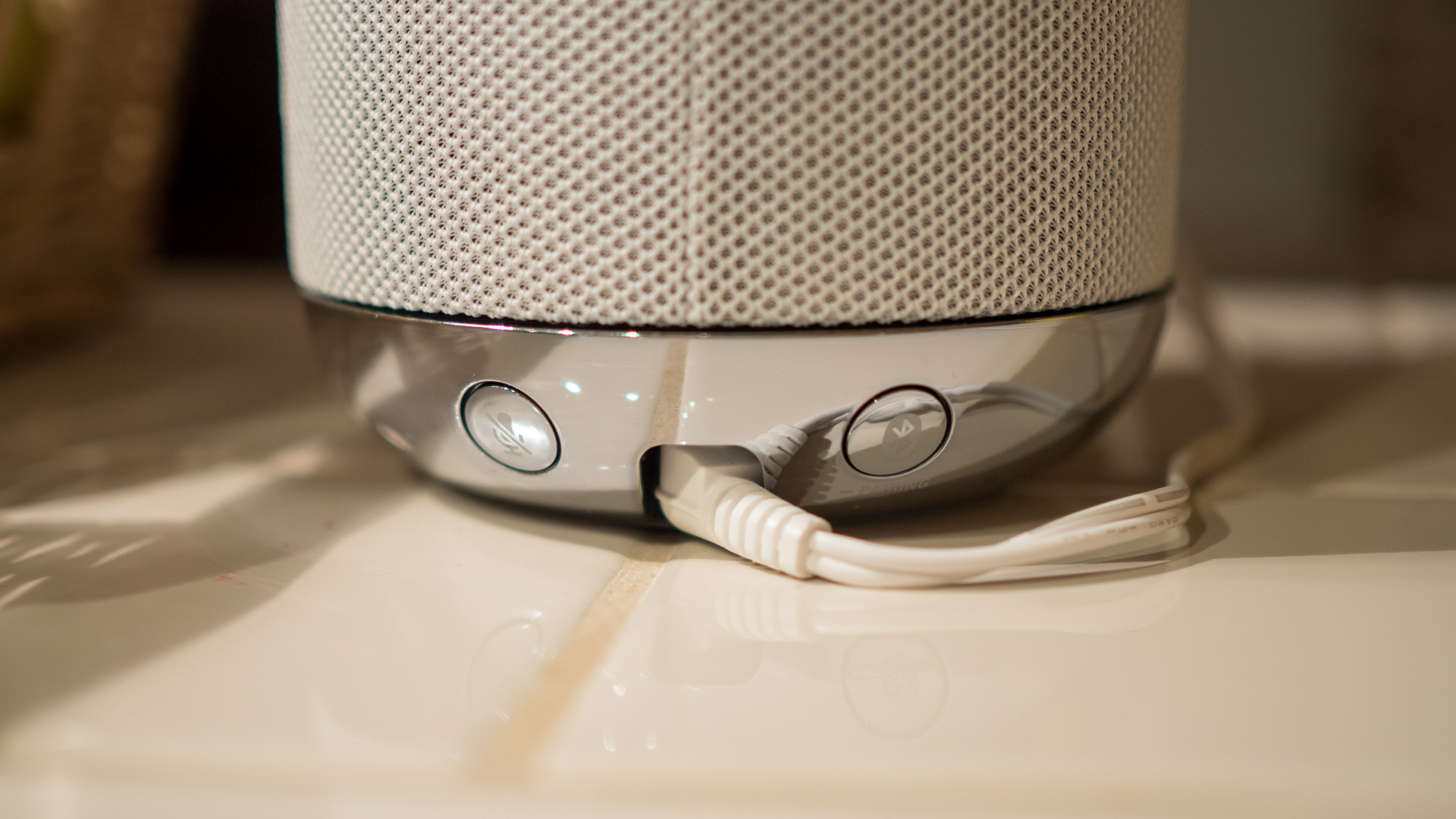
We liked
The Sony LF-S50G features remarkably good voice recognition. The speaker had no problem hearing our voice commands across the room and we never found ourselves shouting, save for when music is playing loudly. For music, the speaker gets incredibly loud for its size and will have no problem filling a medium sized room with music.
We disliked
Compared to the competition, the Sony LF-S50G is a tough value proposition. It sounds slightly better than the year-old Google Home but Google’s speaker can be had for nearly half the price or, for the same price, you can get the excellent sounding Sonos One, which lets you into Sonos’ excellent multi-room speaker ecosystem. (Sure, you’ll have to wait until 2018 for Google Assistant on the Sonos, but you can use Alexa in the meantime.)
While it wasn't terrible, sound quality of the LF-S50G is merely average, especially compared to the Sonos One: Highs exhibit some sibilance at time and bass needs more impact. The soundstage of the Sony is incredibly narrow as well, whereas speakers like the Sonos One and RIVA Arena punch above what their size suggests, throwing sound further, which helps to create a more realistic and immersive listening experience.
The LED clock on the front is very useful but it’s baffling why Sony chose to put the dimmer switch on the bottom of the clock instead of on top or sides. It’s a feature that will be used constantly and require users to pick up the speaker each and every time they want to go to bed at night.
Final verdict
It’s hard to recommend the Sony LF-S50G. As a music playback device, it’s merely average. The speaker gets loud but sound quality leaves something to be desired. Bass lacks dynamic punch and the highs get sibilant at times, especially at higher volumes. It may sound slightly better than the Google Home, but its higher price (nearly double) doesn’t justify its slim victory in audio quality.
As a vessel for Google Assistant, it’s very good at picking up voice controls but so is the cheaper Google Home and Google Home Mini. Additionally, Google’s own speakers have the ability to make calls, which is notably absent in the Sony, though the company claims the feature will eventually come to its speaker.
At the end of the day, the $200 (£200, AU$299) Sony LF-S50G isn't a good value. For the same price, you can get the excellent Sonos One, or for $130 (£130/AU$200), you can get the Google Home, which is still an excellent smartspeaker for the price even though it’s a year old now. DIYers can pick up the Google Home Mini for $50 (£49, AU$79) and roll your own speaker setup with the Chromecast Audio.
